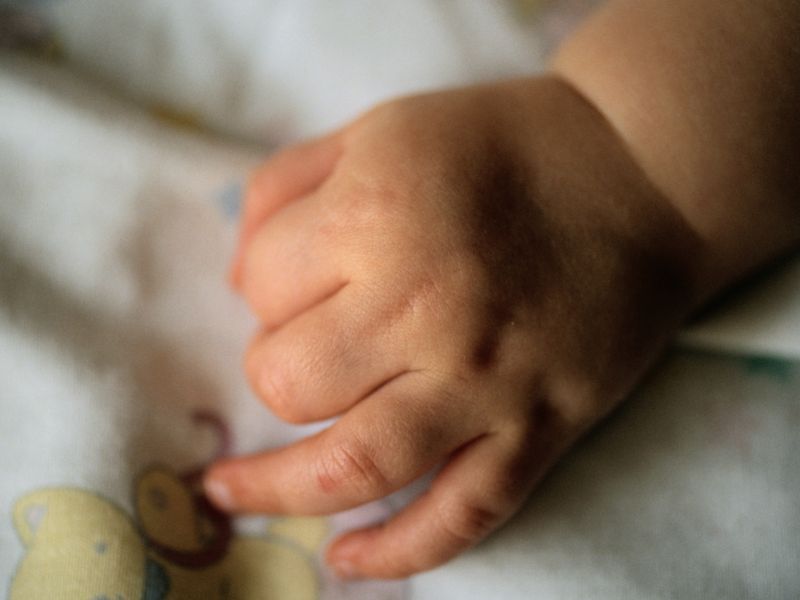World's First Baby Born From Deceased Donor's Transplanted Uterus

TUESDAY, Dec. 4, 2018 (HealthDay News) -- The world's first baby born to a woman who had a uterus transplant from a deceased donor shows that such transplants can be successful, Brazilian doctors say.
The 6-pound baby girl was delivered by C-section to an unidentified young woman who had been born without a uterus.
The birth shows that pregnancies involving a uterus from a deceased donor are viable, said study leader Dr. Dani Ejzenberg.
"The first uterus transplants from live donors were a medical milestone, creating the possibility of childbirth for many infertile women with access to suitable donors and the needed medical facilities," said Ejzenberg, who practices at the University of Sao Paolo. The Brazilian team reported the case Dec. 4 in The Lancet.
Ejzenberg stressed that it's rare that living women are willing and eligible to donate a uterus to a family member or close friend. That's why the new report is so important, he said.
"The use of deceased donors could greatly broaden access to this treatment, and our results provide proof-of-concept for a new option for women with uterine infertility," Ejzenberg said in a journal news release.
There have been 10 other uterus transplants from deceased donors performed in the United States, the Czech Republic and Turkey, but this one in Brazil is the first to result in a live birth.
One U.S. fertility expert said the success in this case really could be a breakthrough.
"Up to 15 percent of couples suffer from infertility and every year thousands of women are using gestational carriers in order to conceive," said Dr. Tomer Singer, who directs reproductive endocrinology at Lenox Hill Hospital in New York City.
"Uterine transplantation can help many couples in achieving their dream of parenthood," he said, and "using a uterus from a deceased organ donor increases the number of donors available significantly."
It also "eliminates the main challenge," Singer added, "which is finding a matching donor and risking the lives of live donors who have to otherwise undergo a major surgery to remove their uterus."
As Ejzenberg's team reported, the recipient in this case was a 32-year-old woman who was born without a uterus, and the donor was a 45-year-old woman who died of a stroke.
The 10.5-hour transplant surgery took place in September of 2016.
The recipient received five immunosuppression drugs (needed to prevent rejection of the new uterus by the body), antibiotics, anti-blood clotting treatment and aspirin while in hospital. Immunosuppression therapy continued after she left the hospital until the time of her baby's birth.
Before the transplant, the woman underwent in vitro fertilization, resulting in eight fertilized eggs that were frozen. Implantation of the eggs occurred seven months after the transplant, the researchers said.
Pregnancy was confirmed 10 days after implantation. The only complication during pregnancy was a kidney infection, which was treated with antibiotics. The baby girl was born at 35 weeks and three days.
The transplanted uterus was also removed during the cesarean section and showed no anomalies, the doctors noted.
The mother and baby were discharged from the hospital three days after birth. At the age of 7 months and 20 days, the baby continued to breastfeed and weighed 15 pounds, 14 ounces.
According to data included in the new report, among infertile couples, one in 500 have uterine infertility due to factors such as birth defects, hysterectomy or infection.
Singer noted that the first childbirth to a woman who received a uterus transplant from a live donor occurred in Sweden in 2013. There have so far been a total of 39 such procedures, resulting in 11 live births.
In these cases, the donor was "usually a family member," he said.
Singer stressed that pregnancies involving transplanted uteruses from deceased donors have failed in the past, but the Brazilian case is "an exciting step in the right direction."
Still, women who do carry a baby using this technique face challenges, he added.
These include the need to use several immune-suppressing drugs throughout the 9 months of pregnancy, which may have side effects on both the mom and the baby; having to deliver the baby and then remove the uterus in a cesarean hysterectomy procedure; a high rate of organ rejection; and a lengthy surgery that requires a multi-disciplinary approach among doctors.
Furthermore, "more research is needed for long-term outcome assessment for both the uterine recipient and the newborns," Singer concluded.
More information
The U.S. Office on Women's Health has more on female infertility.

The news stories provided in Health News and our Health-E News Newsletter are a service of the nationally syndicated HealthDay® news and information company. Stories refer to national trends and breaking health news, and are not necessarily indicative of or always supported by our facility and providers. This information is provided for informational and educational purposes only, and is not intended to be a substitute for medical advice, diagnosis, or treatment.

